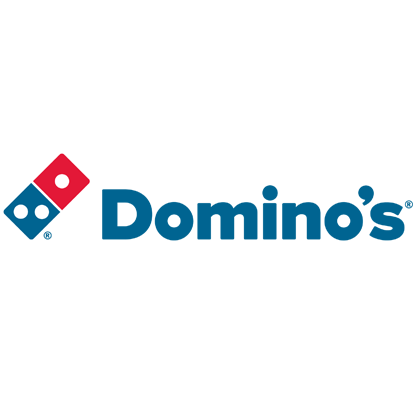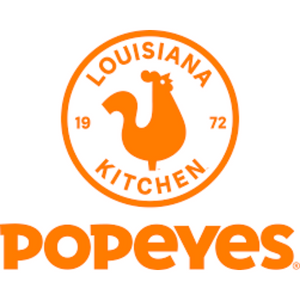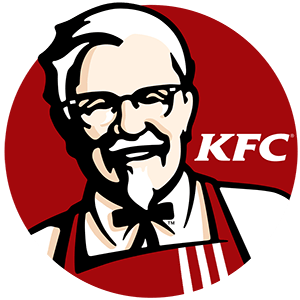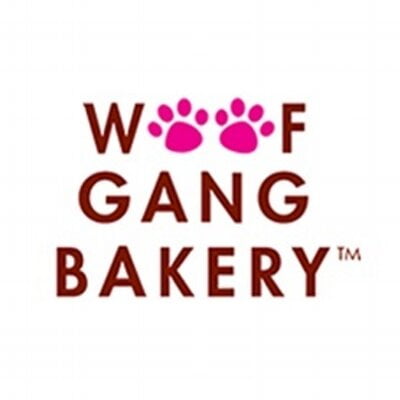Shrinkflation in Top Franchises: Why Your Food Disappeared
Shrinkflation is shrinking your favorite menu items at top franchises like McDonald’s and Chipotle as they fight rising costs. Discover how this trend affects value, customer loyalty, and the future of dining.

Table of Contents:
Shrinkflation is a phenomenon where the size or quantity of a product decreases while its price remains the same or even increases. This tactic is increasingly noticeable in the restaurant franchise industry as businesses try to manage rising costs without directly increasing menu prices. Popular franchises like McDonald’s, KFC, Wendy’s, and Chipotle have all been observed subtly reducing the size of their menu items over time. This practice helps maintain profit margins but can affect customer satisfaction and loyalty, as diners may feel they’re not getting as much value for their money. Understanding this trend is crucial for both franchise owners and consumers in navigating the evolving landscape of the restaurant industry.
Why did we have inflation in the US?
Inflation in the United States from 2020 to 2024 has been driven by several interrelated factors, primarily stemming from the COVID-19 pandemic and its aftermath. Understanding these factors provides context for the economic pressures faced by businesses, including franchises.

Pandemic-related disruptions
The COVID-19 pandemic caused significant disruptions to global supply chains, leading to shortages of goods and raw materials. These shortages, coupled with increased demand for certain products like personal protective equipment and home office supplies, drove prices up. The supply chain disruptions also extended to food and beverage industries, affecting the availability and cost of ingredients essential for restaurant franchises.
Monetary policy
Central banks, including the Federal Reserve in the U.S., implemented policies to stimulate economic activity during the pandemic. These policies included low interest rates and quantitative easing, which involves injecting money into the economy. While these measures were designed to support economic recovery, they also increased the money supply, contributing to inflationary pressures.
Fiscal policy
Governments around the world, including the U.S., introduced large fiscal stimulus packages to support businesses and individuals affected by the pandemic. While these measures helped prevent economic collapse, they also increased demand for goods and services, leading to higher prices. Stimulus checks, unemployment benefits, and other financial support measures put more money into consumers’ hands, boosting spending and driving up prices.
Supply chain disruptions
Beyond pandemic-related issues, other factors such as natural disasters, trade disputes, and geopolitical tensions further disrupted global supply chains. These disruptions led to higher prices for certain goods, including food and energy, which in turn impacted the overall inflation rate.
Rising energy prices
Fluctuations in oil prices significantly impacted inflation, as energy costs affect the prices of many other goods and services. When energy prices rise, businesses often pass those costs onto consumers, contributing to higher overall inflation.
Wage pressures
Increased demand for labor, combined with labor shortages in certain sectors, led to higher wages. Businesses raised wages to attract workers, and in turn, increased prices to offset these higher labor costs. This wage-price spiral contributed to sustained inflationary pressures.
What is shrinkflation?
Shrinkflation is a phenomenon where the size or quantity of a product decreases while its price remains the same or even increases. Essentially, it’s a sneaky way for companies to maintain their profit margins without overtly raising prices. This practice can occur with various consumer goods, such as packaged food, household products, or even electronics. Customers may not immediately notice the change since the price remains constant, but they’re getting less product for their money.
Shrinkflation is often used as a strategy by companies to combat rising production costs. Instead of increasing the price of a product, which could drive away price-sensitive customers, companies reduce the product size or quantity. This method allows companies to protect their profit margins while maintaining customer loyalty by keeping prices stable.
Impact on consumers and businesses
For consumers, shrinkflation can be frustrating because it effectively reduces the value they receive for their money. Over time, this can erode trust in brands if customers feel they are being deceived.
For businesses, shrinkflation is a tool to manage costs without overtly increasing prices, which might be more noticeable and detrimental to sales. However, businesses must balance this strategy carefully to avoid alienating their customer base.
Notable examples of shrinkflation
Shrinkflation is impacting some of the biggest franchise restaurant brands, causing beloved menu items to become smaller over time. This trend is a result of rising costs and the need for businesses to maintain profit margins without significantly increasing prices. Below are notable examples of shrinkflation affecting major fast-food chains:
Domino’s Pizza: Domino’s has seen changes in the size of its pizzas and wings. Customers first noticed these changes in 2022 when Domino’s increased the price of its mix-and-match delivery deal from $5.99 to $6.99 and reduced the number of wings from 10 to 8 for their week-long carryout offer. Additionally, customers have reported that the wings themselves have become smaller.
McDonald’s Big Mac: McDonald’s iconic Big Mac has also been affected by shrinkflation. Customers have observed that the two all-beef patties in the Big Mac have become thinner over the years. Many have taken to social media to share pictures and express their dissatisfaction, noting that the patties are now thinner than the pickles on the burger.
Burger King Chicken Nuggets: Burger King’s chicken nuggets have noticeably shrunk in size and quantity. Customers have shared photos online comparing the current nuggets to those from the past, showing a significant reduction in size. The once plump nuggets now come in reduced packs, often containing fewer pieces than before.
Popeyes Chicken: Popeyes has also experienced shrinkflation, particularly with its sides. Customers have voiced their displeasure over the reduced portion sizes of popular sides like mac and cheese, rice and beans, and mashed potatoes. Videos showcasing these smaller portions have been widely shared on social media.
Chipotle Burritos: Chipotle’s burritos have been another target of shrinkflation. Many customers have complained on social media that the portions have become noticeably smaller, prompting Chipotle’s CEO to address the issue publicly. The shrinking size of burritos has been a common topic of discussion among patrons.
KFC Chicken Sandwich: KFC’s chicken sandwich is another example where shrinkflation has taken hold. Customers have posted photos showing the chicken patty sitting in the center of the bun, far from the edges, indicating a significant reduction in size. This has led to dissatisfaction among loyal KFC customers who have noticed the change over time.
Why are companies committing shrinkflation?
Companies are committing shrinkflation as a strategy to manage rising costs without directly increasing prices. Here are the key reasons behind this practice:
Managing rising costs
- Inflation Rising inflation affects the cost of raw materials, labor, and transportation. Companies face increased expenses in producing and delivering their products, which can significantly impact their profit margins.
- Supply chain disruptions Events such as the COVID-19 pandemic have disrupted global supply chains, leading to shortages and higher costs for raw materials and components. This forces companies to find ways to balance these costs without losing customers.
Consumer sensitivity to price increases
- Price sensitivity Consumers are often highly sensitive to price increases. Directly raising prices can lead to a decrease in sales and customer dissatisfaction. Shrinkflation allows companies to maintain the same price point while reducing the quantity or size of the product, making the price change less noticeable to consumers.
Maintaining competitive advantage
- Market competition In highly competitive markets, raising prices can result in losing customers to competitors who maintain lower prices. Shrinkflation helps companies keep their prices stable, which is crucial for staying competitive.
- Perceived value By keeping prices constant, companies aim to maintain the perceived value of their products. Consumers may feel they are still getting the same product at the same price, even if the quantity has decreased.
Strategic profit management
- Profit margins Shrinkflation helps protect profit margins without the need for price hikes. This strategy is particularly useful for maintaining profitability in the face of rising operational costs.
- Customer loyalty By avoiding overt price increases, companies hope to retain customer loyalty. Consumers might not notice small reductions in product size immediately, reducing the risk of backlash.
How devastating inflation is on franchise restaurant profitability
Inflation significantly impacts the profitability of franchise restaurants, creating numerous challenges that these businesses must navigate to maintain their margins and remain competitive.
Rising costs
- Raw materials The cost of goods sold in restaurants has been notably affected by inflation. Prices for ingredients and supplies have surged due to disruptions in the supply chain and increased demand. For instance, food inflation was reported at over 10% as of September 2023. This increase in the cost of raw materials forces restaurants to spend more on ingredients, directly shrinking their profit margins.
- Labor costs Labor costs have also risen substantially, driven by higher minimum wages and a general increase in the cost of living. This has created a labor shortage, particularly for smaller establishments that struggle to compete with larger chains. Restaurants are now spending a higher percentage of their revenue on labor, which used to account for about 30-35% but is now closer to 40%.
Consumer spending
Inflation erodes consumer purchasing power, leading to reduced discretionary spending. This means that while the average transaction value at restaurants may increase due to higher prices, the number of transactions often decreases as consumers dine out less frequently. For example, restaurant prices increased by 4.4% in 2023, outpacing general inflation and putting further pressure on consumers.
Strategies to combat inflation
To mitigate the impact of inflation, franchise restaurants are adopting several strategies:
- Price adjustments Many restaurants have had to increase menu prices multiple times to keep up with rising costs. For example, Chipotle has raised its prices four times in the past two years to offset inflationary pressures.
- Cost management Restaurants are exploring ways to cut costs by negotiating better deals with suppliers, reducing waste, and optimizing their menus to focus on the most profitable items. Reducing portion sizes and eliminating less popular menu items can help control costs.
- Labor efficiency Improving labor productivity through better scheduling, training, and possibly outsourcing certain tasks can help manage rising labor costs. Restaurants are also offering higher wages and more flexible working conditions to attract and retain staff.
- Consumer engagement Personalizing the customer experience and enhancing service quality can help retain customers despite higher prices. Building loyalty through targeted promotions and superior customer service is crucial in maintaining a steady customer base during inflationary periods.
What are franchises that you can invest in that are not as impacted by inflation?
Investing in franchises that have lower labor and food costs can be a strategic move, especially in an inflationary environment. Here are some industries and specific franchises that are generally less affected by inflation:
- MaidPro: MaidPro specializes in residential cleaning services. With a focus on customer satisfaction and customizable cleaning plans, MaidPro has a scalable business model with lower labor costs and minimal material expenses.
- JAN-PRO: JAN-PRO focuses on commercial cleaning and janitorial services. The franchise offers extensive training and support, making it easier to manage operational costs while maintaining high service standards.
- Anytime Fitness: Anytime Fitness is a 24-hour gym franchise that benefits from lower food costs and relies on membership fees for a steady revenue stream. The franchise offers comprehensive support and a flexible business model.
- Jazzercise: Jazzercise combines fitness and dance for a unique workout experience. With low overhead costs and a focus on community engagement, Jazzercise franchises can thrive even during inflationary periods.
- RE/MAX: RE/MAX is a well-known real estate franchise with global reach. It has lower operational costs as it doesn’t deal with food or high labor expenses, making it a resilient option during inflation.
- Keller Williams Realty: Known for its extensive training and support, Keller Williams Realty benefits from a growing market and minimal operational costs compared to other industries.
- SuperGlass Windshield Repair: Specializing in repairing cracked or damaged windshields, SuperGlass offers a service with low labor costs and steady demand.
- Meineke Car Care Centers: Meineke provides automotive repair and maintenance services. With a focus on essential services, Meineke franchises have lower labor costs and consistent demand.
- Mr. Rooter Plumbing: Offering plumbing repair and maintenance services, Mr. Rooter Plumbing has lower labor and material costs, making it a stable investment during inflation.
- Handyman Connection: Providing a variety of home repair and maintenance services, Handyman Connection offers a scalable business model with lower operational costs.
- Woof Gang Bakery: A pet supply and grooming retail franchise that benefits from steady demand and lower labor costs, making it resilient during inflation.
- Camp Bow Wow: Offering pet boarding and daycare services, Camp Bow Wow has consistent demand and lower labor costs, making it a stable investment.
Conclusion
Shrinkflation is a growing phenomenon where products decrease in size or quantity while their prices remain the same or even increase. This subtle change allows companies to manage rising costs without overtly raising prices, which could drive away customers. In the restaurant franchise industry, this tactic has become more prevalent as businesses face increased expenses due to inflation, supply chain disruptions, and higher labor costs. Major franchises like McDonald’s, KFC, Wendy’s, and Chipotle have all been observed reducing the size of their menu items over time. While this helps maintain profit margins, it can also impact customer satisfaction and loyalty, as consumers may feel they’re not receiving the same value for their money.
Understanding the drivers of inflation and the strategies used to combat it, such as shrinkflation, is crucial for both franchise owners and consumers. For franchise owners, navigating these economic pressures requires a balance between cost management and customer retention. This includes finding ways to streamline operations, improve labor efficiency, and enhance customer engagement to maintain profitability. For consumers, being aware of shrinkflation helps in making informed purchasing decisions and setting realistic expectations about the products and services they receive. As the economic landscape continues to evolve, both parties must adapt to the changing conditions to ensure mutual satisfaction and success in the restaurant industry.

















